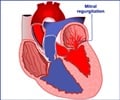Researchers investigated whether microplastics exist in the human heart and its surrounding tissues, using a laser imaging system and scanning electron microscopy.

Detecting The Presence of Microplastics in Heart Surgery Procedure
Microplastics are plastic fragments less than 5 millimeters wide, or about the size of a pencil eraser. Research has shown that they can enter the human body through mouths, noses, and other body cavities with connections to the outside world (1✔ ✔Trusted SourceMicroplastics: A Matter of the Heart (and Vascular System)
Go to source).
‘The type and diameter distribution of microplastics in the blood showed alterations following the heart surgery.#Microplastics #HeartSurgery #EnvironmentalExposure’





Once present in the human body, plastic particles can interact with circulating cells, eliciting an inflammatory response. The interaction NPs with plasma proteins allows their transport to distant organs, including the heart.Many organs and tissues are fully enclosed inside a person’s body, but scientists lack information on their potential exposure to, and effects from, microplastics. So, researchers wanted to investigate whether these particles have entered people’s heart tissue through indirect and direct exposures.
In a pilot experiment, the researchers collected heart tissue samples from 15 people during cardiac surgeries, as well as pre-and post-operation blood specimens from half of the participants. Then analyzed the samples with laser direct infrared imaging and identified 20 to 500 micrometer-wide particles made from eight types of plastic, including polyethylene terephthalate, polyvinyl chloride, and poly (methyl methacrylate) (2✔ ✔Trusted Source
Detection of Various Microplastics in Patients Undergoing Cardiac Surgery
Go to source).
This technique detected tens to thousands of individual microplastic pieces in most tissue samples, though the amounts and materials varied between participants. All the blood samples also contained plastic particles, but after surgery their average size decreased, and the particles came from more diverse types of plastics.
Although the study had a small number of participants, it has provided preliminary evidence that various microplastics can accumulate and persist in the heart and its innermost tissues. They add that the findings show how invasive medical procedures are an overlooked route of microplastic exposure, providing direct access to the bloodstream and internal tissues.
Advertisement
References:
- Microplastics: A Matter of the Heart (and Vascular System) - (https://www.mdpi.com/2227-9059/11/2/264)
- Detection of Various Microplastics in Patients Undergoing Cardiac Surgery - (https://pubs.acs.org/doi/10.1021/acs.est.2c07179)














